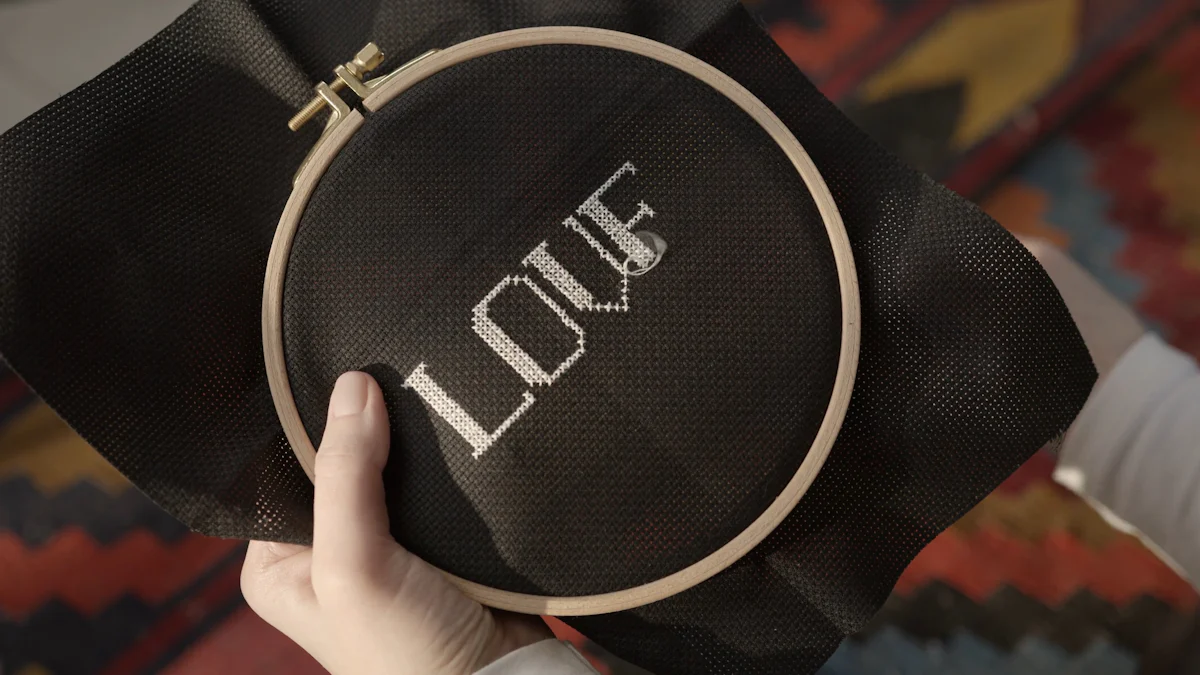
Rigid Filz zeichnet sich durch ein einzigartiges Material aus, das für seine Steifigkeit und Haltbarkeit bekannt ist. Sie können sich darauf verlassen, für ausgezeichnete isolierende Eigenschaften, so dass es eine wesentliche Wahl in anspruchsvollen Umgebungen. Seine Fähigkeit, unter extremen Temperaturen durchzuführen, macht es in industriellen Einstellungen unschätzbar. Ob in Bau- oder Hochtemperaturanwendungen eingesetzt, dieses Material sorgt für eine zuverlässige Isolierung und langlebige Leistung. Seine robuste Natur und Vielseitigkeit ermöglichen es, den Bedürfnissen verschiedener Branchen gerecht zu werden und sowohl Effizienz als auch Widerstandsfähigkeit zu bieten.
Wichtigste Erkenntnisse
- Rigid Filz ist ein langlebiges und steifes Material, ideal für Hochtemperatur-Isolierung, in der Lage, Temperaturen bis 3000° zu widerstehen C.
- Seine einzigartige Zusammensetzung, oft auch Kohlenstoff- und Graphitfasern, erhöht seine Festigkeit und thermische Beständigkeit und eignet sich für anspruchsvolle industrielle Anwendungen.
- Im Gegensatz zu weichem Filz hält starres Filz seine Form unter Druck, so dass es perfekt für hoch beanspruchte Umgebungen in der Bau-, Automobil- und Luftfahrtindustrie.
- Die Vielseitigkeit des Materials ermöglicht die Anpassung in verschiedenen Formen und Größen, die Verpflegung auf spezifische industrielle Bedürfnisse und die Verbesserung seiner Usability.
- Rigid Filz ist umweltfreundlich und recycelbar und macht es zu einer nachhaltigen Wahl für moderne Anwendungen und reduziert Umweltauswirkungen.
- Im Bau sorgt der steife Filz für eine effektive Schallisolierung und Isolierung, was die Energieeffizienz und den Komfort in Gebäuden verbessert.
- Im Automobilbereich trägt sie zur Lärmminderung und -isolierung von Motorkomponenten bei, wodurch die Fahrzeugleistung und der Fahrgastkomfort verbessert werden.
Was ist Rigid Felt?

Definition and Overview
Rigid Filz ist ein spezialisiertes Material für Haltbarkeit und Isolierung. Im Gegensatz zu herkömmlichem Weichfilz erfährt es einen einzigartigen Herstellungsprozess, der seine Steifigkeit und Festigkeit erhöht. Dieses Material verbindet häufig Fasern wie Kohlenstoff oder Graphit mit Bindemitteln, um seine starre Struktur zu erreichen. Sie finden es besonders nützlich in Umgebungen, die Hochtemperaturbeständigkeit und langlebige Leistung erfordern. Seine Fähigkeit, extremen Bedingungen standzuhalten, macht es zu einer bevorzugten Wahl in Industrien wie Bau, Automotive und Aerospace.
Diese Art von Filz dient mehr als nur einem isolierenden Material. Es bietet auch eine ausgezeichnete Verschleißfestigkeit und sorgt für Zuverlässigkeit in anspruchsvollen Anwendungen. Seine Vielseitigkeit ermöglicht es, sich an verschiedene Formen anzupassen, einschließlich Platten, Zylinder und individuelle Formen, so dass es für verschiedene industrielle Bedürfnisse geeignet.
Wie Rigid Felt Differs von anderen Arten von Filz
Vergleich mit weichem Filz
Weicher Filz und starrer Filz unterscheiden sich deutlich in Struktur und Anwendung. Weiches Filz ist flexibel und häufig für dekorative oder polsternde Zwecke verwendet. Im Gegensatz dazu bietet starrer Filz eine feste und dauerhafte Lösung für den industriellen Einsatz. Sie werden feststellen, dass weiches Filz die strukturelle Integrität fehlt, die für hochstressige Umgebungen benötigt wird. Rigid Filz behält jedoch seine Form unter Druck und extremen Temperaturen.
Weiches Filz funktioniert gut in wirkungsarmen Anwendungen, aber starrer Filz zeichnet sich durch Situationen aus, die Wärmedämmung und mechanische Festigkeit erfordern. So kann z.B. Weichfilz Möbel oder Handwerke reihen, während starrer Filz Hochtemperaturöfen oder Motorkomponenten isoliert.
Die wichtigsten Vorteile von Rigid Felt
Rigid Filz bietet mehrere Vorteile, die es auseinandersetzen. Erstens, seine Haltbarkeit gewährleistet langfristige Leistung, auch unter harten Bedingungen. Sie können sich darauf verlassen, Verschleiß zu widerstehen und die Notwendigkeit für häufige Ersatz. Zweitens, seine Wärmedämmfähigkeiten machen es ideal für Hochtemperaturanwendungen. Es kann Temperaturen bis 3000°C standhalten und bietet unübertroffenen Schutz in extremen Umgebungen.
Ein weiterer Vorteil liegt in seiner Vielseitigkeit. Rigid Filz passt sich an verschiedene Formen und Größen an, was eine Anpassung an spezifische industrielle Bedürfnisse ermöglicht. Darüber hinaus machen seine umweltfreundlichen Eigenschaften, wie Recyclingfähigkeit, eine nachhaltige Wahl für moderne Anwendungen. Diese Eigenschaften machen starres Filz zu einem wertvollen Material in verschiedenen Branchen.
Schlüsselmerkmale von Rigid Felt
Materialzusammensetzung
Gebräuchliche Fasern (z.B. Kohlenstofffilz, Graphitfolie, synthetische Mischungen)
Rigid Filz verdankt seine einzigartigen Eigenschaften den in seiner Zusammensetzung verwendeten Materialien. Als Hauptkomponenten finden Sie oft Fasern wie Kohlenstofffilz, Graphitfolie und synthetische Mischungen. Carbonfilz bietet eine ausgezeichnete Wärmedämmung, so dass es für Hochtemperatur-Umgebungen geeignet ist. Graphitfolie verbessert die Festigkeit und Wärmebeständigkeit des Materials und gewährleistet Haltbarkeit unter extremen Bedingungen. Synthetische Mischungen fügen Vielseitigkeit hinzu, so dass das Material sich an spezifische industrielle Anforderungen anpassen kann. Diese Fasern arbeiten zusammen, um ein Produkt zu schaffen, das in anspruchsvollen Anwendungen zuverlässig arbeitet.
Rolle von Bindemitteln in Steifigkeit
Bindemittel spielen eine entscheidende Rolle, um starren Filz seine Steifigkeit und strukturelle Integrität zu geben. Diese Mittel verbinden die Fasern zusammen und gewährleisten, dass das Material auch unter Druck seine Form behält. Ohne Bindemittel würden die Fasern keinen Zusammenhalt haben und die Wirksamkeit des Materials reduzieren. Sie können sich auf diese Kombination von Fasern und Bindemitteln verlassen, um ein Produkt zu liefern, das Verschleiß und Verschleiß widersteht und gleichbleibende Leistung bietet.
Physikalische Eigenschaften
Langlebigkeit und Steifigkeit
Rigid Filz zeichnet sich durch seine außergewöhnliche Haltbarkeit und Steifigkeit aus. Sie können davon abhängen, um seine Form und Funktion im Laufe der Zeit zu erhalten, auch in anspruchsvollen Umgebungen. Seine starre Struktur sorgt dafür, dass sie sich nicht unter Spannung verformt, so dass es ideal für Anwendungen, die mechanische Festigkeit erfordern. Diese Langlebigkeit reduziert den Bedarf an häufigen Austauschen und spart sowohl Zeit als auch Ressourcen.
Resistance to wear and tear
Ein weiteres Schlüsselmerkmal des starren Filzes ist seine Verschleißfestigkeit. Das Material hält wiederholten Gebrauch stand, ohne seine Wirksamkeit zu verlieren. Sie werden feststellen, dass es gut in High-Impact-Einstellungen funktioniert, wo andere Materialien scheitern könnten. Dieser Widerstand macht es zu einer zuverlässigen Wahl für Industrien, die langlebige Lösungen fordern.
Umwelt- und Thermische Eigenschaften
Hochtemperaturdämmfähigkeiten
Rigid Filz zeichnet sich durch die Hochtemperatur-Isolierung aus und macht es in Industrien wie Luft- und Bauwesen unverzichtbar. Es kann Temperaturen bis zu 3000°C ertragen und bietet einen unübertroffenen Schutz bei extremen Bedingungen. Sie können es vertrauen, um Öfen, Motoren und andere Hochwärme-Umgebungen effektiv zu isolieren. Diese Fähigkeit gewährleistet Sicherheit und Effizienz in kritischen Anwendungen.
Umweltfreundlichkeit und Wiederverwertbarkeit
Neben seiner Leistung bietet starres Filz Umweltvorteile. Viele Formen dieses Materials sind recycelbar, reduzieren Abfall und fördern Nachhaltigkeit. Sie können starres Filz als umweltfreundliche Option für moderne Anwendungen wählen. Seine lange Lebensdauer minimiert die Umweltauswirkungen weiter und macht sie zu einer verantwortungsvollen Wahl für Industrien, die ihre CO2-Bilanz reduzieren wollen.
Wie ist Rigid Felt Made?
Überblick über den Fertigungsprozess
Faserauswahl und -aufbereitung
Die Herstellung von starrem Filz beginnt mit der sorgfältigen Auswahl von Fasern. Sie werden oft Materialien wie Kohlenstoff, Graphit oder synthetische Mischungen für ihre spezifischen Eigenschaften ausgewählt. Jeder Fasertyp trägt einzigartige Eigenschaften wie Wärmebeständigkeit oder Strukturfestigkeit bei. Hersteller reinigen und bereiten diese Fasern, um sicherzustellen, dass sie die erforderlichen Standards für Qualität und Leistung erfüllen. Dieser Schritt legt den Grundstein für die Schaffung eines Materials, das in anspruchsvollen Anwendungen zuverlässig arbeitet.
Kompressions- und Hafttechniken
Sobald die Fasern fertig sind, verwenden Hersteller Kompressions- und Klebetechniken, um den starren Filz zu bilden. Sie komprimieren die Fasern unter hohem Druck, um die gewünschte Dichte und Steifigkeit zu erreichen. Anschließend werden Bindemittel aufgebracht, um die Fasern zusammenzuhalten, wodurch das Material seine Form und Steifigkeit behält. Wärmebehandlung folgt oft, Verbesserung der Haltbarkeit und Wärmebeständigkeit des Endprodukts. Dieser Prozess verwandelt die Rohfasern in ein robustes Material, das extremen Bedingungen standhält.
Produktionsvariationen
Unterschiede in Materialien für spezifische Anwendungen
Die Wahl der Materialien kann je nach bestimmungsgemäßer Anwendung des starren Filzes variieren. Für Hochtemperatur-Umgebungen können Hersteller aufgrund ihrer ausgezeichneten Wärmebeständigkeit Kohlenstoff- oder Graphitfasern priorisieren. Im Gegensatz dazu können synthetische Mischungen für Anwendungen verwendet werden, die Flexibilität oder leichte Eigenschaften erfordern. Sie werden feststellen, dass diese Variationen erlauben, dass das Material den spezifischen Bedürfnissen der verschiedenen Industrien gerecht wird, von der Luft- und Raumfahrt bis zur Automobilindustrie.
Anpassungsmöglichkeiten für Industrien
Rigid Filz bietet umfangreiche Anpassungsmöglichkeiten an verschiedene industrielle Anforderungen. Die Hersteller können sie in unterschiedlichen Formen, wie Platten, Zylindern oder sogar komplexen 3D-Formen herstellen. Sie können auch Anpassungen in Dichte, Dicke oder Zusammensetzung an Ihre spezifischen Bedürfnisse anfordern. Diese Anpassungsoptionen machen steifes Gefühl zu einer vielseitigen Lösung für Branchen, die maßgeschneiderte Materialien für einzigartige Herausforderungen suchen.
Anwendungen von Rigid Felt

Baugewerbe
Anwendungen in Schallschutz und Isolation
Sie können sich auf starren Filz für effektive Schallschutz und Isolierung in Bauprojekten verlassen. Seine dichte Struktur absorbiert Schallwellen und reduziert die Geräuschübertragung zwischen Räumen oder Etagen. Dies macht es zu einer ausgezeichneten Wahl für die Schaffung von ruhigeren Innenumgebungen. Darüber hinaus helfen seine isolierenden Eigenschaften Innentemperaturen zu halten, indem Wärmeverlust minimiert wird. Dies verbessert die Energieeffizienz und senkt die Heiz- oder Kühlkosten. Egal, ob Sie an Wohn- oder Gewerbegebäuden arbeiten, Hartfilz bietet eine zuverlässige Lösung für Komfort und Energieeinsparung.
Anwendungen im Dach- und Fußbodenbereich
Rigid Filz spielt eine wichtige Rolle bei Dach- und Bodenanwendungen. Seine Haltbarkeit und Steifigkeit machen es für den Einsatz als Unterlagsmaterial geeignet. Bei der Dachung wirkt es als Schutzschicht, verhindert Feuchtigkeitsdurchdringung und verbessert die Wärmeisolierung. Für den Boden bietet es einen stabilen Boden, der den Verschleiß an den Oberflächenmaterialien reduziert. Sie finden es besonders nützlich in Bereichen mit schwerem Fußverkehr, wo lang anhaltende Leistung ist unerlässlich. Seine Vielseitigkeit gewährleistet, dass sie den Anforderungen moderner Baupraktiken gerecht wird.
Automotive Industry
Lärmminderung im Fahrzeuginnenraum
In der Automobilindustrie trägt starrer Filz zu leiseren und komfortableren Fahrzeuginnenräumen bei. Seine schallabsorbierenden Eigenschaften reduzieren Motorgeräusche, Straßenschwingungen und andere externe Geräusche. Dies schafft ein angenehmeres Fahrerlebnis für Passagiere. Sie finden es in Türplatten, Armaturenbrettern und Decken verwendet, um akustische Leistung zu verbessern. Durch die Minimierung des Geräuscheinbruchs hilft starrer Filz, den Fokus und die Entspannung während der Reise zu verbessern.
Einsatz in Motorkomponenten und Isolierung
Rigid Filz dient auch als wirksames Material für die Isolierung von Motorkomponenten. Sein Hochtemperaturwiderstand sorgt dafür, dass er bei den anspruchsvollen Bedingungen einer Motorhaube gut funktioniert. Es hilft, die Wärme zu regulieren, die nahe gelegenen Komponenten vor Schäden durch übermäßige Temperaturen zu schützen. Darüber hinaus reduziert seine Leichtigkeit das Gesamtgewicht des Fahrzeugs und verbessert die Kraftstoffeffizienz. Sie können von starrem Filz abhängen, um die Sicherheit und Leistung moderner Fahrzeuge zu verbessern.
Luft- und Hochtemperaturanwendungen
Isolierung für monokristalline Siliciumschmelzöfen
Rigidfilz zeichnet sich in Hochtemperatur-Umgebungen, wie einkristallinen Siliziumschmelzöfen, aus. Diese Öfen benötigen Materialien, die extremer Hitze standhalten können, während die strukturelle Integrität erhalten bleibt. Rigid Filz bietet eine ausgezeichnete Wärmedämmung, die einen effizienten Energieeinsatz und eine gleichbleibende Ofenleistung gewährleistet. Seine Fähigkeit, Temperaturen bis 3000° zu halten C macht es zu einer vertrauenswürdigen Wahl für diese kritische Anwendung. Sie können darauf zählen, zuverlässige Ergebnisse in diesen anspruchsvollen Bedingungen zu liefern.
Einsatz in Hochtemperatur-Industrieprozessen
Neben Schmelzöfen findet Hartfilz Anwendungen in verschiedenen Hochtemperatur-Industrieprozessen. Es isoliert Geräte in der Metallbearbeitung, Glasproduktion und chemischen Verarbeitung. Seine Beständigkeit gegen Verschleiß sorgt für langfristige Leistung, auch in rauen Umgebungen. Durch die Verwendung von starrem Filz können die Industrien die Energieeffizienz verbessern und die Geräte vor thermischen Schäden schützen. Seine Vielseitigkeit und Haltbarkeit machen es zu einem unverzichtbaren Material für Hochtemperatur-Betriebe.
Sonstige Industrien
Anwendungen in Möbeln und Design
Dank seiner einzigartigen Kombination aus Langlebigkeit und ästhetischer Attraktivität finden Sie steifes Filz, das sich in Möbel und Design verwandelt. Designer verwenden es oft, um moderne, minimalistische Möbelstücke zu schaffen. Seine Steifigkeit ermöglicht es, Form zu erhalten, so dass es ideal für Stühle, Tische oder dekorative Platten. Sie können ihre Verwendung in akustischen Wandpaneelen bemerken, wo es nicht nur die visuelle Attraktivität erhöht, sondern auch Geräuschpegel in einem Raum reduziert.
Rigid Filz funktioniert auch gut in benutzerdefinierten Design-Projekten. Seine Fähigkeit, in verschiedene Formen geschnitten und geformt zu werden, gibt Designern die Freiheit, mit kreativen Ideen zu experimentieren. Ob Sie nach funktionellen Möbeln oder künstlerischen Installationen suchen, bietet das steife Filz ein zuverlässiges und vielseitiges Material, das sowohl den praktischen als auch ästhetischen Bedürfnissen entspricht.
Verwendung in Verpackungen und Schutzmaterialien
Rigid Filz spielt eine wichtige Rolle bei Verpackungen und Schutzmaterialien. Seine dichte Struktur absorbiert Stöße, so dass es eine ausgezeichnete Wahl für die Sicherung von zerbrechlichen Gegenständen während des Transports. Sie können sich darauf verlassen, Elektronik, Glaswaren oder andere empfindliche Produkte vor Beschädigung zu schützen. Hersteller verwenden es oft, um maßgeschneiderte Verpackungslösungen zu schaffen, die eine bequeme und sichere Passform für wertvolle Gegenstände gewährleisten.
Dieses Material bietet auch umweltfreundliche Vorteile in der Verpackung. Viele Formen von starrem Filz sind recycelbar, was hilft, Abfälle zu reduzieren und nachhaltige Praktiken zu unterstützen. Wenn Sie auf der Suche nach einer dauerhaften und umweltverträglichen Option für Schutzverpackungen sind, zeichnet sich starres Filz als eine ausgezeichnete Wahl aus. Seine Kombination aus Stärke, Vielseitigkeit und Nachhaltigkeit macht es zu einem bevorzugten Material in verschiedenen Branchen.
Rigid Filz zeichnet sich durch seine Haltbarkeit, Steifigkeit und außergewöhnliche Isoliereigenschaften aus. Sie können sich darauf verlassen, in anspruchsvollen Umgebungen zu arbeiten, so dass es ein wichtiges Material in Industrien wie Bau, Automotive und Aerospace. Seine Anpassungsfähigkeit an verschiedene Anwendungen unterstreicht seine Vielseitigkeit. Darüber hinaus unterstützt seine umweltfreundliche Natur nachhaltige Praktiken. Durch die Wahl des starren Filzes gewinnen Sie eine zuverlässige und effiziente Lösung für moderne Herausforderungen. Dieses Material kombiniert Stärke, Funktionalität und Nachhaltigkeit und macht es zu einer unschätzbaren Ressource für unterschiedliche industrielle Bedürfnisse.